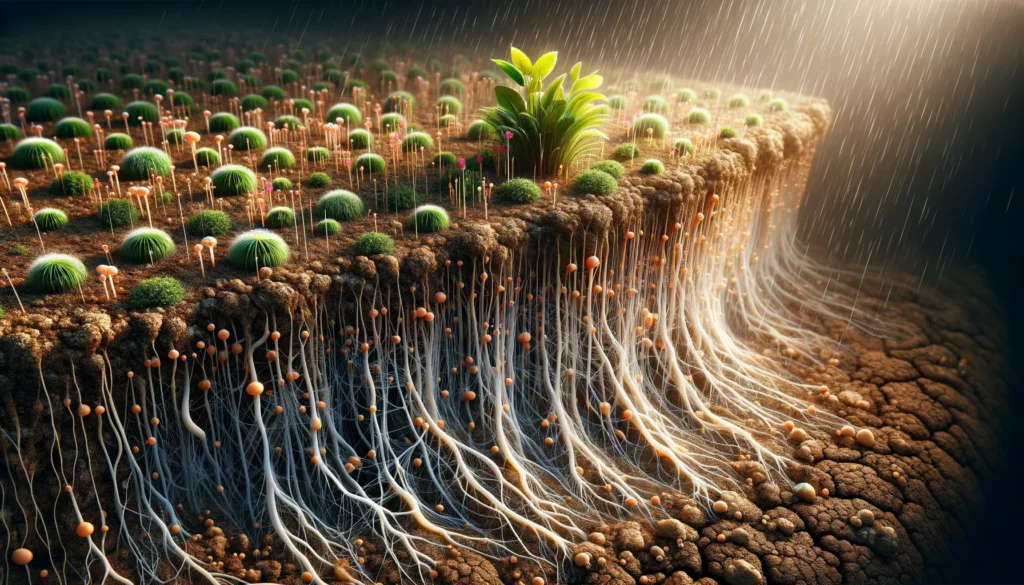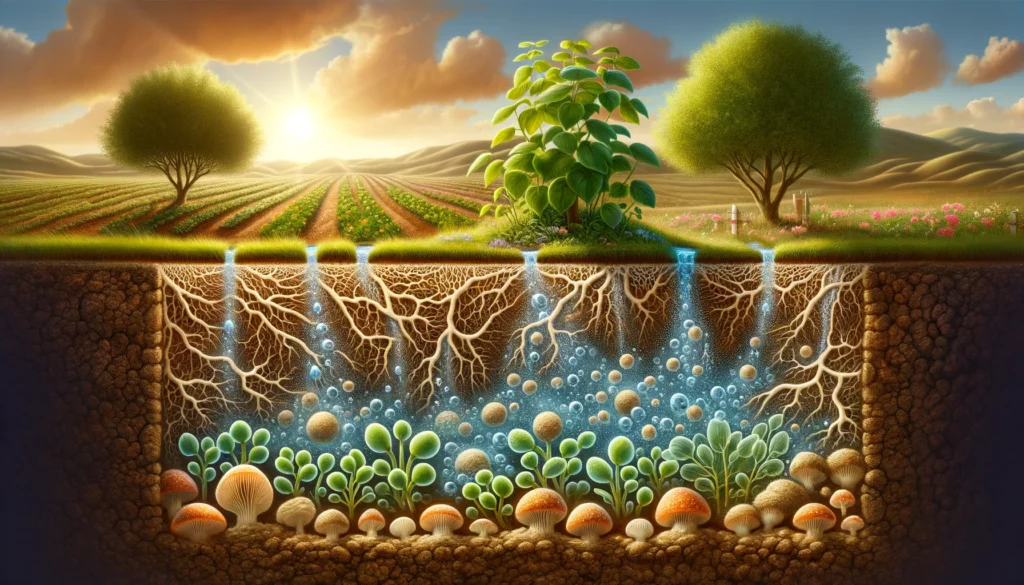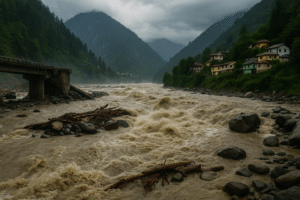Welcome to the third blog of our series – “Fungi Magic: Reviving Drylands“
In the vast stretches of the world’s drylands, where water is scarce and life clings to existence, a quiet transformation is underway. This transformation is not the work of advanced technology or human invention but of fungi, the Earth’s natural nurturers. In this chapter of “Eco-Fungi: Earth’s Climate Fix,” we explore how these microscopic organisms are revitalizing drylands, turning barren soil into fertile ground.
The Challenge of Drylands
Drylands, which cover about 41% of Earth’s land surface, are environments where water is scarce, making life a constant challenge. These areas, characterized by low rainfall and high evaporation rates, face the tough conditions of droughts more frequently than other regions. The scarcity of water impacts not just the availability of drinking water but also the health of soils and the plants that grow in them.

The soil in these regions often lacks essential nutrients, making it hard for plants to thrive. Moreover, the threat of desertification looms large, where fertile land is turned into desert as a result of drought, deforestation, or inappropriate agriculture. These challenges make drylands emblematic of the struggle to maintain biodiversity and sustain life in harsh conditions.
Fungi: The Unsung Heroes of Drylands
In the stark landscapes of drylands, fungi stand out as vital but often overlooked champions of survival and resilience. These microscopic organisms work silently beneath the surface, playing a key role in making life possible in such tough environments. Fungi form symbiotic relationships with many of the plants that manage to survive in drylands, offering them a lifeline in several ways.
Firstly, fungi extend the reach of plant roots through their mycelial networks, enabling plants to access water and nutrients from far beyond their root zones. This is especially crucial in nutrient-poor soils where every bit of nourishment counts. Secondly, fungi help in the formation of soil aggregates by binding soil particles together, which improves soil structure and its ability to retain water. This not only aids in water conservation but also prevents erosion, combating the process of desertification.

Furthermore, by decomposing organic matter, fungi release nutrients back into the soil, enriching it and making it more conducive for plant growth. This natural process of nutrient cycling is essential for sustaining the delicate ecosystems of drylands.
Fungi’s role in enhancing soil fertility, aiding water retention, and preventing soil erosion underlines their importance as unsung heroes of drylands. Their ability to support plant life not only conserves biodiversity but also supports the livelihoods of millions of people who live in these challenging environments.
Boosting Soil Fertility
In the vast stretches of drylands that cover a significant portion of our planet, the battle for soil fertility is ongoing. Soil fertility refers to the ability of soil to provide essential nutrients to plants, supporting their growth and health. Here, fungi emerge as unsung heroes, playing a pivotal role in enriching the soil.

Fungi, through their symbiotic relationships with plants, create a nutrient exchange network that’s like a busy marketplace under the earth. They trade vital nutrients like phosphorus, nitrogen, and potassium with plants. In return, they receive sugars produced by the plants through photosynthesis. This exchange not only feeds the plants but also enhances the nutrient content of the soil itself, making it more fertile.
Moreover, fungi break down organic matter, turning dead leaves and other materials into nutrient-rich compost. This natural recycling process replenishes the soil, making it a more robust and nurturing environment for plants to thrive. Through these actions, fungi play a critical role in boosting soil fertility, especially in drylands where resources are scarce and life clings tenaciously to existence.
Aiding in Water Retention
Water is a precious commodity in drylands, where droughts can be a common occurrence. Fungi contribute significantly to water retention in the soil, helping to sustain plant life even in arid conditions. Their mycelium, a network of tiny threads, weaves through the soil, creating a structure that helps hold water. This sponge-like property allows the soil to retain moisture for longer periods, providing plants with a steady water supply.

Additionally, the mycelial network acts as a conduit for water distribution, channeling moisture to where it’s most needed. Plants connected to this fungal network can access water from a larger area than their roots alone could reach, enhancing their drought resilience. This ability of fungi to aid in water retention is crucial for the survival of plants and the maintenance of ecosystems in dryland areas, highlighting fungi’s essential role in supporting life in some of the most challenging environments on Earth.
Author’s Note
As we delve into the role of fungi in drylands, it’s clear that these tiny organisms have a big job. They are at the heart of efforts to combat desertification and enhance soil fertility, proving that sometimes, the smallest things can make the biggest difference. By understanding and supporting the work of fungi, we can help transform drylands into thriving landscapes, full of life and potential.
G.C., Ecosociosphere contributor.
References and Further Reading
- “The Hidden Half of Nature: The Microbial Roots of Life and Health” by David R. Montgomery and Anne Biklé – Explores the vital relationships between plants and soil microbes, including fungi, in nurturing life.
- “Mycelium Running: How Mushrooms Can Help Save the World” by Paul Stamets – Offers insights into the incredible potential of fungi for environmental restoration and sustainability.
- “Dirt to Soil: One Family’s Journey into Regenerative Agriculture” by Gabe Brown – Chronicles the transformative power of nurturing soil life, including the critical role of fungi, in revitalizing farmland.
Stay tuned for our next blog, where we’ll explore biochar’s environmental benefits and how fungi contribute to this sustainable solution in our ongoing battle against climate change.





Comments
Thank you for your sharing. I am worried that I lack creative ideas. It is your article that makes me full of hope. Thank you. But, I have a question, can you help me?
Can you be more specific about the content of your article? After reading it, I still have some doubts. Hope you can help me.
Your point of view caught my eye and was very interesting. Thanks. I have a question for you.
Your article helped me a lot, is there any more related content? Thanks!
Thank you for your sharing. I am worried that I lack creative ideas. It is your article that makes me full of hope. Thank you. But, I have a question, can you help me?